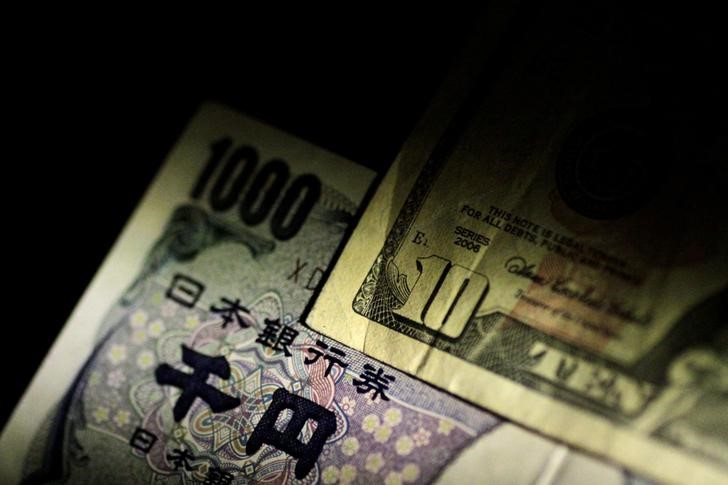By Masayuki Kitano
SINGAPORE (Reuters) – The dollar touched a one-week low against the yen on Thursday, as lingering worries about global trade tensions weighed on investors’ risk appetite.
Market participants remain concerned about increased protectionism under U.S. President Donald Trump’s administration, with U.S. equities having fallen on Wednesday after Trump sought to impose fresh tariffs on China.
“The fear of an escalating trade war with China has global markets on edge with investors taking a defensive posture,” Stephen Innes, head of trading in Asia-Pacific for Oanda in Singapore said in a note.
Against this backdrop, the safe-haven yen has gained support, Innes added.
The dollar last traded at 106.01 yen, down 0.3 percent on the day. Earlier on Thursday, the dollar had touched a trough of 105.825 yen, its lowest level since March 7.
A drop to levels below its early March low of 105.24 yen would take the greenback to its weakest since November 2016.
The Trump administration is pressing China to cut its trade surplus with the United States by $100 billion.
In addition, Larry Kudlow, the incoming director of the White House national economic council, said on Wednesday that China has earned a tough response from the United States and other countries on trade, even though he has previously criticized “blanket” tariffs.
In an interview with CNBC, Kudlow said he would like to see the dollar a “wee bit stronger than it is currently”.
Kudlow added that a strong and stable dollar was important for U.S. economic health and that he had no reason to believe Trump disagreed.
Kudlow’s comments on the dollar are unlikely to have much of an impact at this juncture, said Satoshi Okagawa, senior global markets analyst for Sumitomo Mitsui Banking Corporation in Singapore, adding that persistent worries over U.S. protectionism could continue to weigh on the greenback.
“The main focus is on any actions that Trump might take,” Okagawa said.
On the economic front, U.S. retail sales data on Wednesday did not really help the dollar. Sales fell, offsetting a stronger-than-forecast rise in domestic producer prices last month.
That should further prompt the Federal Reserve to raise interest rates at a gradual pace. The market still expects the Fed to raise rates three times this year, starting at next week’s monetary policy meeting.
The dollar index, which measures the greenback against a basket of six major peers, held steady at 89.670. The dollar index has shed roughly 0.5 percent so far this week.
The euro edged up 0.1 percent to $1.2378. The common currency, however, remained below Wednesday’s near one-week high of $1.2413.
The euro had sagged on Wednesday after European Central Bank President Mario Draghi struck a dovish tone in his speech.
Draghi said the ECB needs further evidence that inflation is rising towards its target but is growing more confident it is on track to do so.
Elsewhere, the New Zealand dollar briefly came under pressure after mixed New Zealand economic growth data cemented bets on interest rates staying at record lows for a long time yet.
The New Zealand dollar slipped to $0.7305 at one point after the fourth quarter GDP data, but later pared its losses to trade at $0.7332, little changed from late U.S. trade on Wednesday.
(Reporting by Masayuki Kitano; Editing by Sam Holmes and Himani Sarkar)



















